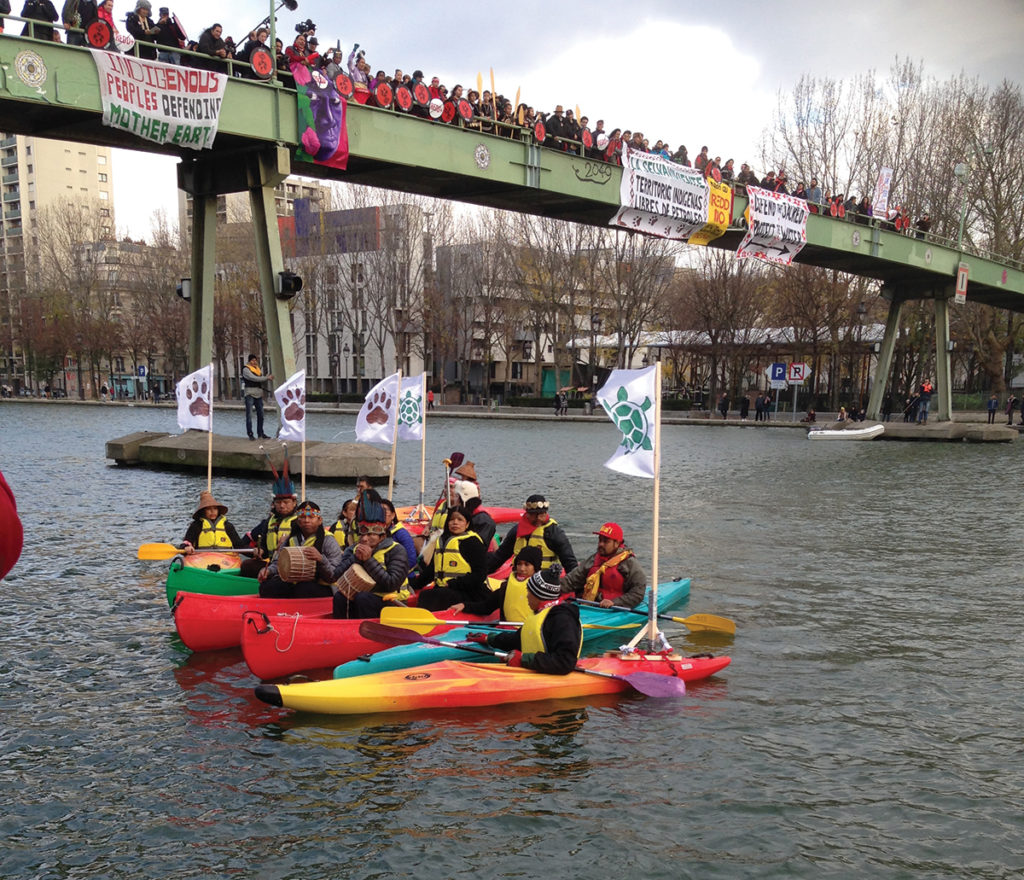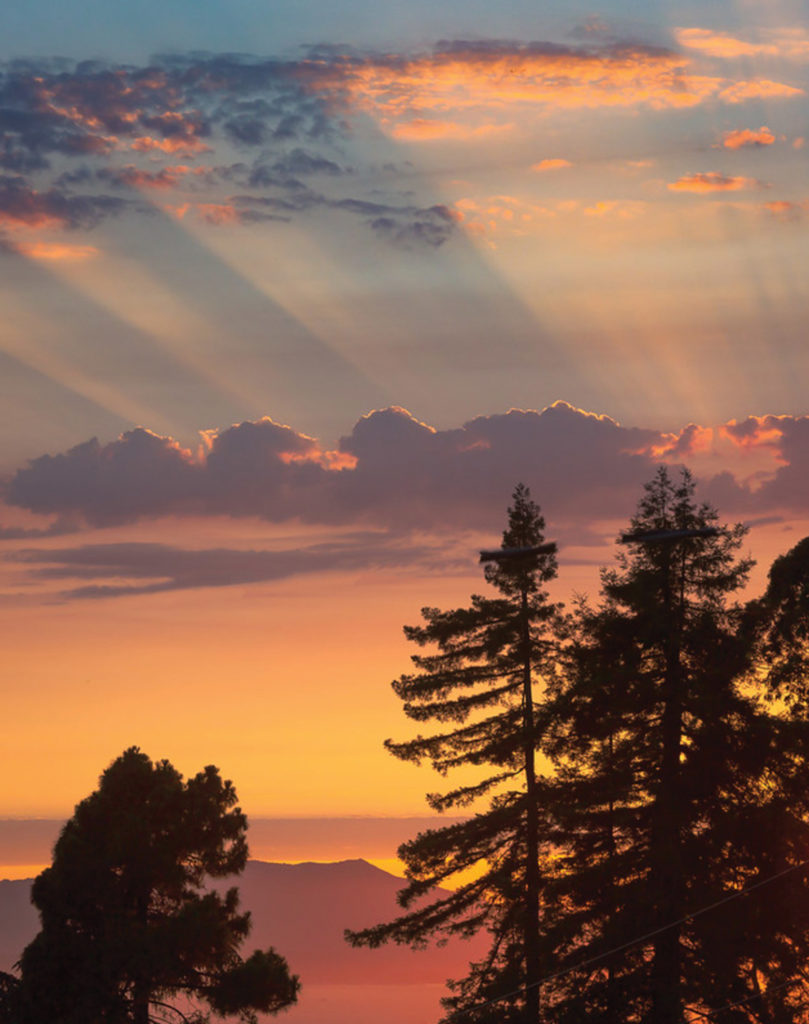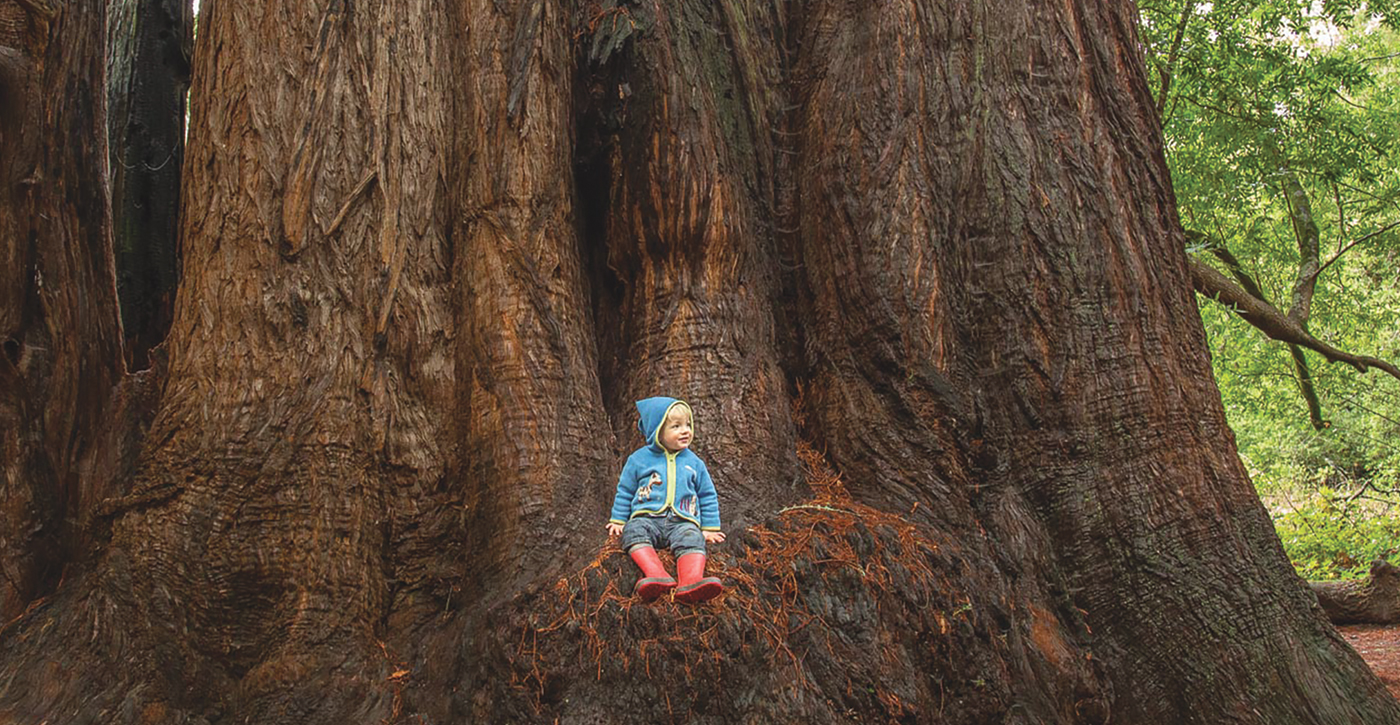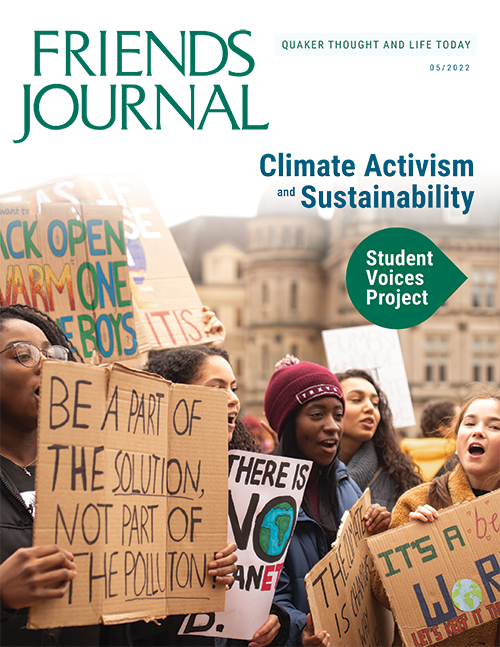“Let us be the ancestors our descendants will thank.” —Winona LaDuke
I am a part of nature, and nature is a part of me.
This is the core of how I have lived my life. It has guided me in what I do as a “public Friend”: how I witness my faith in the world and the choices I make (when I have choices) about food, housing, location, transportation, and vocation. It helped me decide whether or not to have children and how many. It gives me peace and solace when I need it.
I have always felt this, and growing up, I mostly felt this alone. My religion of origin (as I learned it) did not teach me this idea; my family did not share this worldview; and most of my peers were unaware of our connection with nature. Slowly, as I grew into adulthood, I recognized that the love I have always felt for nature and from nature is not only my personal spiritual calling but a legitimate, recognized worldview: a religion followed by nearly every Indigenous community worldwide.
My roots are European, and somewhere in my middle years (40s), I learned about European-based paganism and Wicca, and even practiced with a Quaker coven of sorts. We marked the changing seasons with ceremony, guided meditation, movement, and art. It was such a joy to dip my toes into this deep tradition that had been part of my ancestry for thousands of years. It was a joy to share my spiritual connection to nature with my fellow Friends.
My awareness of being part of nature has led me to spend all of my adult life working on ecology and environmental science. For the past 15 years, I have focused on climate. Anthropogenic climate change is devastating our world. Many are just beginning to feel the effects, but just ask people in Bentiu, South Sudan, who were were flooded out of their homes last year; or those in the state of Gujarat, India, whose homes were destroyed last May during the worst storm to ever hit that area, Cyclone Tauktae; or listen to people who used to live in the small California town of Paradise, a town that was completely lost to fire in 2019, resulting in part from long-term drought. These three stories are a small sampling of events that demonstrate the kinds of climate-disruption sufferings that millions of people and other species have already endured.
Climate change is one of the many ecological crises we are currently facing. We are also in the midst of the sixth largest mass extinction that our planet has endured; life in our oceans is in rapid decline; and our soils are being depleted. These are all symptoms of a human world that has forgotten our physical home and spiritual connection with nature.
Since I am a part of nature and nature is a part of me, each of these ecological crises crushes me. I feel like pieces of my soul are being lost whenever I hear about another environmental disaster. How do I keep going as a public Friend speaking of earthcare? How do I keep going in my personal life in the face of such overwhelming despair and depletion of our planet?

Indigenous activists paddle down the Seine, Dec. 6, 2015, during the Paris Climate Accords to lobby for formal recognition of rights under the pending agreements. Photo by Shelley Tanenbaum.
My sense of despair reached a turning point in 2014, when I was a year into my job as general secretary for Quaker Earthcare Witness. In that role, I was part of a multi-faith coalition planning a climate march in New York City that would coincide with “climate week” at the United Nations. At the time, most of us faith leaders, including myself, were feeling despondent about the lack of public engagement on climate. Whether you call it “climate grief” or “ecological despair,” we had it in a big way.
We hoped that the march would bring as many as 100,000 people to the streets. As I waited and waited to start marching with the Quaker contingent, wedged between the Buddhists and the Unitarians, our spirits lifted way beyond what we had thought possible. Our long wait meant that massive numbers of people were on the streets. Sometime in the early afternoon, we started marching, joining an estimated 400,000 others, calling on international leaders to do something about climate! I ended the day with hope that the world was waking up.
The following year, I cried with joy when I read the Pope’s encyclical Laudato si’ (“Praise Be to You”), published in 2015, and subtitled On Care for our Common Home. Here was the leader of the largest branch of Christianity, saying what was in my heart. He concluded the encyclical with a prayer, a small piece of which beseeches:
Teach us to discover the worth of each thing, to be filled with awe and contemplation, to recognize that we are profoundly united with every creature as we journey towards your infinite light.
Again, it felt like the world was finally waking up and embracing a way to live in right relationship with the living world and with each other.
In that same year, I attended the climate conference in Paris (COP21, the Conference of the Parties held annually by the United Nations). As much as the closing ceremony was exciting and inspirational, the most profound message came from Indigenous communities of the world. I was drawn to their messages of ecological balance and the interrelationship of all beings. I stood on the banks of the Seine, cheering on Indigenous kayakers as they floated on the river, calling for the world to wake up to the ongoing climate catastrophe. I listened to speaker after speaker from Indigenous communities worldwide describe their struggles for eco-balance and justice, all based on their core belief that we are all related: all people and all of the living world.
Living into this vision is not just a matter of personal integrity (for example, greening our households or traveling lightly); these changes have to be systemic. They need to be accessible and affordable to all if we are to embrace justice.
I no longer feel alone in my love for nature, in my spiritual earthcare calling. Now, Indigenous people of the world are rising and leading the way. Some of the leading organizations are the Indigenous Environmental Network, Idle No More, Honor the Earth, and the Lakota People’s Law Project.
Mainstream world religions are starting to embrace earthcare as a core principle; this new/old way of practicing religion is still on the fringes of mainstream thought, but it is moving to the forefront. This is evident from the growth of organizations such as Greenfaith and Interfaith Power and Light. I am most connected with Quaker Earthcare Witness, which has been growing over the past few years. For decades, small clusters of Friends in monthly and yearly meetings rose up to embrace unity with nature/earthcare, and some Quaker organizations carried out some work on sustainability. Now, Quakerism is showing signs of recognizing the importance of ecological balance, environmental justice, and our spiritual relationship with the living world.
Advocates for racial justice recognize that climate and environmental justice are both critically important. In their platform, the Poor People’s Campaign emphasizes the importance of environmental justice, not as an add on but as one of their core tenets: “The truth is that the poor live on the frontlines of climate change and bear the brunt of costs and impacts of climate volatility.” Black, Indigenous, and People of Color know all about ecological disaster. Many live in areas polluted by toxins, degraded by years of abuse, and ignored by the surrounding communities. Environmental justice is a key to earthcare. Hop Hopkins from the Sierra Club explains how this works:
If our society valued all people’s lives equally, there wouldn’t be any sacrifice zones to put the pollution in. If every place was sacred, there wouldn’t be a Cancer Alley. We would find other ways to advance science and create shared wealth without poisoning anyone. We would find a way to share equally both the benefits and the burdens of prosperity.
I envision a world where all people and all creatures can thrive. Many Friends have been co-creating that vision by reading and reflecting on the book Braiding Sweetgrass by Robin Wall Kimmerer. Both my monthly and yearly meetings held extended discussions about the Indigenous worldview, described eloquently and poignantly by the author as she writes of her Potawatomi upbringing, her relationship with the land, and its significance for our world’s ecological crises. In “The Serviceberry” in Emergence Magazine, she says:
I want to live in a society where the currency of exchange is gratitude and the infinitely renewable resource of kindness, which multiplies every time it is shared rather than depreciating with use.
The more we live into this vision, the sooner it will happen. But living into this vision is not just a matter of personal integrity (for example, greening our households or traveling lightly); these changes have to be systemic. They need to be accessible and affordable to all if we are to embrace justice, and they need to be large enough to change everything about how we live on the planet, all seven and a half billion of us.

Photo by Kathryn Barnhart
Even though I was going full-tilt in my work as a public Friend on earthcare, I recently again found myself succumbing to despair. I had trouble keeping up with the news, which seemed to go from one political or environmental disaster to another. Knowing that ecological awareness is growing helped tremendously, but the despair was trickling in.
Suddenly that changed for me when I Iearned that I was going to become a grandmother. Much to my surprise, I no longer have space for despair: a new being is coming into my life who is full of hope, beauty, and joy. I can’t explain how this happened, but my heart opened up to living with much more hope, beauty, and joy. The next generation deserves our attention and focus on repairing the world that they will inherit.
When I was considering whether or not to have children, I weighed both personal and social concerns. In addition to this being a personal choice, it was important for me to consider global sustainability. I was already committed to working toward ecological integrity, so choosing to have two or fewer children came naturally to me. My faith required me to make personal choices that matched my concerns for sustainability. Whether or not to have children and how many to have is likely to be the most significant environmental action that each of us will take in our lives.
Today’s young adults face a daunting dilemma beyond the personal and sustainability questions that I faced. What kind of world will their children live in? For at least the next 100 years, we will see devastating physical and political challenges as our global ecosystem changes rapidly for the worst. I don’t know if I would choose to have a child today, but I do know that colonized people and oppressed people—including my ancestors—faced equally gloomy prospects in their time.
I don’t just want to choose hope: I am compelled to choose hope. When my son told me that he was going to be a father, my heart literally jolted with euphoria. Seeing sonograms of my grandchild and watching my daughter-in-law grow rounder has created a tenderness in me that I haven’t felt since I had my two children. Pacific Yearly Meeting’s Faith and Practice calls on us to live in harmony with creation in ways “that reflect our responsibility to one another, to the greater community of life, and to future generations.” I am committed to serving as a public Friend for earthcare with all the hope, beauty, and joy that I can muster.




Comments on Friendsjournal.org may be used in the Forum of the print magazine and may be edited for length and clarity.